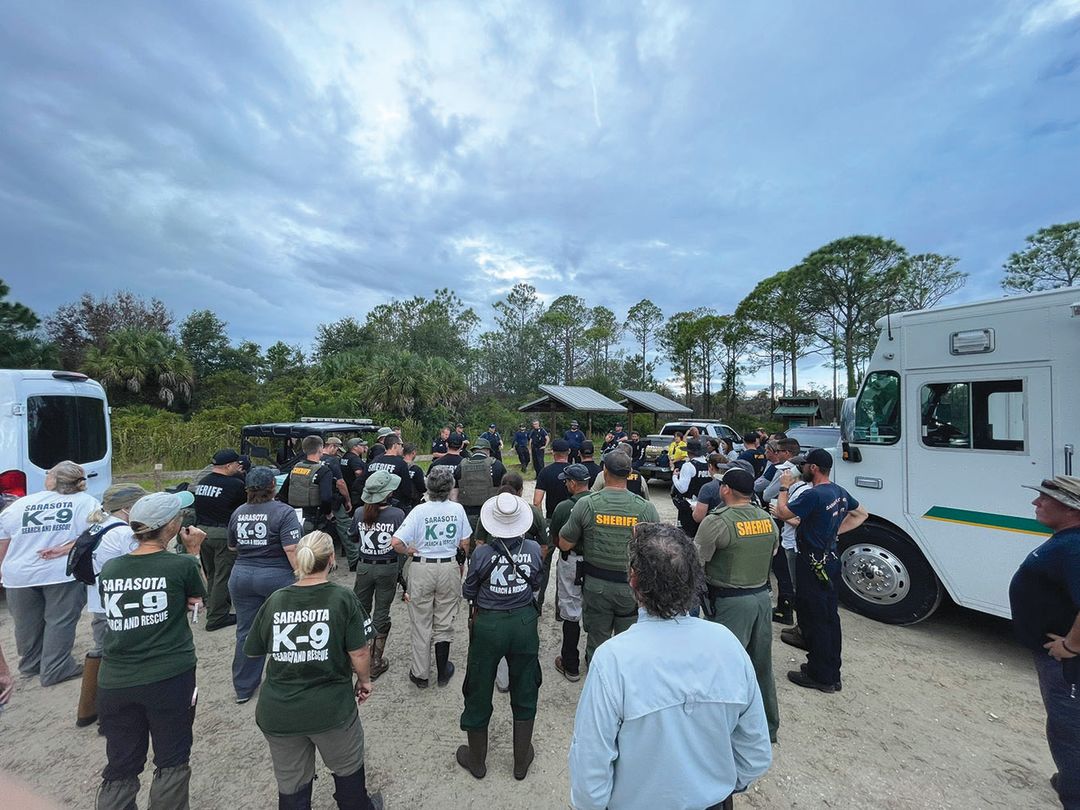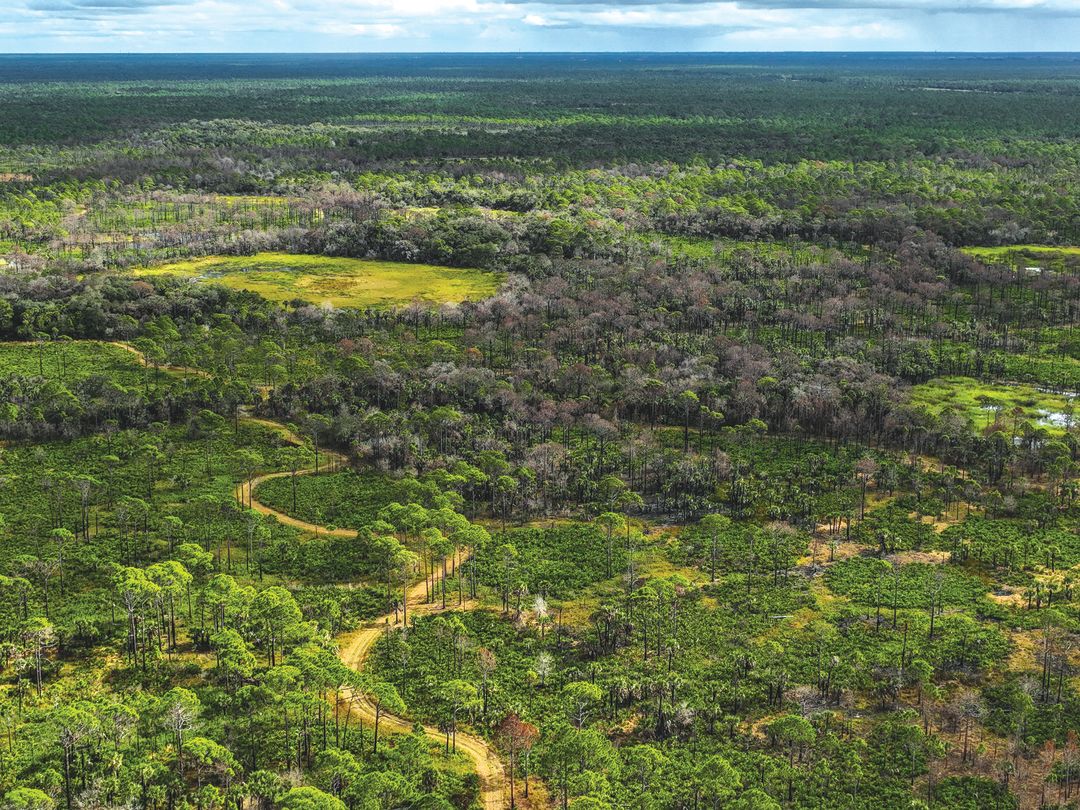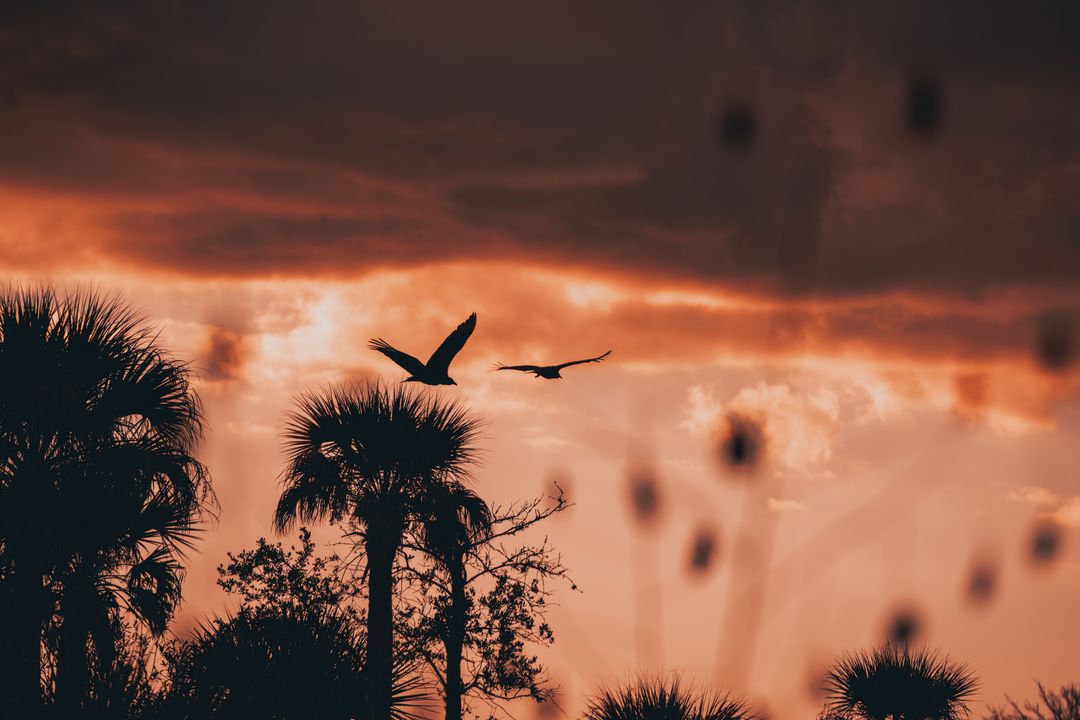
How the Brian Laundrie Case Hurt Florida
Editor's note: On Friday, Jan. 21, 2022, four months after Gabby Petito’s body was found at a campground near Grand Teton National Park in Wyoming, the FBI reported that her boyfriend, Brian Laundrie, wrote in a notebook that he had killed Petito. The notebook was found near his body at the Carlton Reserve in Sarasota County where Laundrie had killed himself with a gun.
“All logical investigative steps have been concluded in this case,” said FBI Denver Division Special Agent in Charge Michael Schneider. “The investigation did not identify any other individuals other than Brian Laundrie directly involved in the tragic death of Gabby Petito.”
The case might be closed but, as Isaac Eger reports in his story, “How the Brian Laundrie Case Hurt Florida,” the damage done by law enforcement and the media to the health and reputation of the Carlton Reserve—one of our most beautiful parks—remains. Even now, when you type Carlton Reserve into a search engine, most results center on Laundrie and repeat erroneous accounts of how the park is a dangerous wasteland filled with man-eating alligators. We don’t know how much damage was done to the park, how much money will be spent to fix it or if the damage will ever be repaired.
Just after police found Brian Laundrie’s body in the Carlton Reserve, the exit sign to the park disappeared. It was the second time someone had stolen the wooden sign off its post. The marker had become a macabre souvenir since the Gabby Petito murder case turned the 25,000-acre park in Sarasota into a menacing backdrop for one of the most peculiar media stories of 2021.
I was at the Carlton Reserve the day it reopened with Debbie Blanco, the reserve’s former land manager. Blanco, who had spent more than 22 years taking care of the park, was anxious to get in. For more than a month, at least 16 different law enforcement agencies, including the FBI, hunted for Laundrie, the alleged murderer of Petito, deep inside this lush landscape. No one else was permitted in the park during the search. Blanco and I were there to survey any damage done by the manhunt, sight some of early fall’s blooming flowers and set the record straight about what the Carlton Reserve is really like.
If you are unfamiliar with the Petito-Laundrie story, congratulations. You escaped a tabloid onslaught that captured international attention for significantly longer than did the bungled U.S. military withdrawal of Afghanistan.

A law enforcement briefing during the Brian Laundrie search
To those of you who need a refresher, here’s a recap. For more than a month, starting Sept. 11, 2021, the media enthralled the public with the mysterious disappearance and murder of a pretty 22-year-old blond girl named Gabby Petito, and the subsequent search for her 23-year-old fiancé and assumed killer, Brian Laundrie. The couple had been living in North Port, a city in south Sarasota County, before they took off on a road trip. Petito’s body was found in Wyoming. She had been strangled. Laundrie’s last known whereabouts were in the Carlton Reserve, not too far from where he had been living.
News vans camped outside the Laundrie family’s house in North Port after he became a suspect, and reporters stood outside, speaking with the gravitas of war-hardened journalists embedded in Syria whenever the latest conjecture came through the wire.
I first heard about the story through my phone on Sept. 11. A friend living in New York sent a Reddit post about a missing girl from North Port. I didn’t think much of it. A sad local story, yes, but seemingly indistinguishable from the other daily tragic news stories that often come across our screens.
But this happened in Florida, a state that the media—and Americans—love to abuse. We’re always good for a laugh followed by a sense of superiority. We are either drug-fueled cannibals (yes, this story came out of a 2012 Miami crime case), a gator-infested backwater where toothless yokels park trucks on their lawns or the home of nouveau-riche trophy wives with botched cheek fillers. The takeaway for most outsiders is that Florida is a crazy, weird place, and our natural landscape is a dank hellhole.
The Petito-Laundrie tragedy reinforced the stereotype of Florida as an unpleasant, dangerous place. The Carlton Reserve was described in U.K. tabloids as a “death trap” and a “wasteland.” CNN detailed the “foreboding landscape of the reserve” filled with “many venomous snakes, gators, palmetto bugs and swarms of mosquitoes.” The North Port Police told the media in a Facebook post that “the Carlton Reserve is a vast and unforgiving location and this was dangerous work for the search crews as they are wading through gator and snake infested swamps and flooded hiking and biking trails.”
“Experts” added to the color. “If he’s down there in the Carlton Reserve, he’s living in hell,” local survival expert Mark Burrow told the Sarasota Herald-Tribune. Burrow said that if an alligator got hold of Laundrie, there’d be nothing left of him because gators “like to put a carcass under a log, and let it get all rotten. Then the gator would eat you slowly.”
Wilderness expert Robert Urban reiterated all the bite-y things lurking in the Florida reserve to the investigative journalism website Insider: “You have so many animals that are hungry. You can be in a snake stomach, you can be in a gator stomach, or you can be eviscerated by a bear.”
A local told The Independent—another publication out of the U.K.—that worse than the alligators were the wild pigs. “They’re evil animals and will eat anything,” he said. “Any flesh out in the open will not be wasted. There won’t be much for the coroner to work on.”
If you’d never been to the Carlton Reserve before, and your only reference was the media, you’d think that the reserve was the gateway to the underworld.
“Gosh, it was awful,” said Blanco, who is now on the board of the Environmental Conservancy of North Port and Surrounding Areas. “They portrayed it as this horrible hell of swamps and snakes. It absolutely is not like that. It was disturbing to hear the whole world hear about the reserve in this manner. The media got this information, dramatized it and blew it out of proportion.”
None of this is new. We’ve been belittling Florida since before it was a state in the Union. Michael Grunwald documents the history of Florida slander in his book The Swamp. “It is a land of swamps, of quagmires, of frogs and alligators and mosquitos! A man, sir, would not immigrate into Florida…no, not from hell itself!” ranted a 19th-century Virginia congressman about why Florida should not be part of the Union.
Before Zachary Taylor was president, he commanded troops in Florida. He “groused that he wouldn’t trade a square foot of Michigan or Ohio for a square mile of Florida.” One lieutenant moaned that “millions of money has been expended to gain this most barren, swampy, and good-for-nothing peninsula.”
Florida was eventually made part of the Union in 1845, but its addition was as a military buffer from European powers and to corner and eliminate the escaped slaves and rebel Native Americans who were living here. No one gushed about the sunsets or imagined a land of subdivisions and theme parks. Untouched Florida was too wet and thick with nature—until we spent the next 100 years wringing it dry.

An expanse of Carlton Reserve.
Image: Everett Dennison
But not completely. The first thing I noticed at the Carlton Reserve was that it was sopping wet. During the rainy summer season, the land turns into a bathtub. In fact, half of Sarasota County’s water supply comes from about a dozen 400-foot-deep wells on the Carlton Reserve. It is also remarkably flat, even by Southwest Florida standards. Its flatness hides the magnitude of those 24,565 acres.
Blanco and I made our way through its varying ecosystems. Under oak hammocks, between pine flatwoods or standing on the dry prairies, you feel like you are in a series of different parklands. You can walk for hours and not see any manmade structures. There are more than 100 miles of trails for hikers, bikers, equestrians, botanists and birders, and a kayak launch if you want to paddle on the Myakka River. If you want a tamer experience, there are picnic facilities and restrooms.
It is true that there are animals with lots of teeth and claws out there—gators and snakes, bobcats and bears, vultures and eagles, and even the occasional ghostly Florida panther—but they are not gnashing. Instead, consider yourself lucky if you run into them. Blanco and I stumbled upon a baker’s dozen of newborn baby gators, sweetly grunting to their mother hidden somewhere in the tall grass. Even those “evil” feral pigs have their charm. When a family of boars crossed our path, Blanco let out a pleased sigh. “I know I’m supposed to hate them, being invasive and all,” she said. “But I can’t help but love those adorable little pigs.”
We stopped by an open area that had been burned recently. Blanco spotted a flower she’d been looking for. “It’s called gayfeather,” she told me. “But probably better you just refer to it as blazing star.” They were purple flowers that clustered at the top of a single stalk. In full bloom, they look like Marge Simpson’s hair.
I realized I could spend a lifetime getting to know this land and still be surprised. The colors changed as we made our way through the park’s different ecosystems—the thick green and gray of the oak hammocks, the gold grass of the dry prairie, the black char of a recently burned saw palmetto patch. I could see the neon green of the new growth and still smell the smoke, even though it was more than a month old.
That I could walk in this public park is a result of visionary leaders. Not so long ago, the Carlton Reserve was a place where cowboys let their cattle graze and also a turpentine camp. In the early 1900s, John and Charles Ringling won this land in a card game from the owner of the camp and drilled some exploratory oil wells. All they found was “worthless” water. To make use of the property, they let their circus animals graze and hunted for game to feed the lions and tigers. In 1959, the MacArthur Foundation, which had large land holdings in Florida, saw the 24,000-plus acres as a good investment, and purchased the property from the Ringling family, which was selling assets to settle John Ringling’s estate more than 20 years after his death.
The main reason we have a park, though, is due mostly to T. Mabry Carlton Jr., a fifth-generation Floridian and rancher who served on the Sarasota County Commission from 1980 to 1989. He was an unusual rancher. He used a small plane to herd his cattle rather than a horse. This aerial view of the land allowed him to see that subdivisions were sprouting all around his ranch. Carlton knew that at the rate the land was being purchased by developers, it would become impossible to buy big plots of land to save for conservation. So, in 1982, Carlton brought the idea of purchasing the land to the county commission. The county made a deal with the MacArthur Foundation, and voters approved the $30 million purchase in a special election.
In a moment of tragic irony, Carlton was flying a plane over his ranch when he experienced technical difficulties and crashed. He died before the purchase was finalized. In his honor, the park is called the T. Mabry Carlton Jr. Memorial Reserve. It opened in September 1996, and by 2004, the county had paid off the mortgage.

Sunset at Carlton Reserve
Image: Everett Dennison
With all this money, time and effort put into buying and preserving the Carlton park, I’ve wondered about the toll the search and media attention have taken on the land. For weeks, the news broadcasted aerial photos of airboats, ATVs, swamp buggies and scores of law enforcement agents searching off trail for Laundrie. Natural historian Jono Miller, who is intimately familiar with the reserve, was worried, too. He reached out to all five county commissioners and the county administrator to ask them how they would remediate any potential damage done by the search.
“They never got back to me,” Miller said. “These lands are so sensitive to change. It’s not like the beach where you can dig a big hole in the sand and you come back the next day and it’s filled up. Because the reserve is so flat, any minor alterations can change the drainage patterns and alter the vegetation.”
Government officials know this. The Florida Fish and Wildlife Conservation Commission has documented that off-road vehicles can permanently damage vegetation and disturb the natural flow of water far beyond the actual tracks they make.
Walking along the paths, Blanco and I found a few damaged trails and large impressions from swamp buggies, but without some official survey, she says we can’t know what’s been hurt or what needs to be done to repair it.
I asked county officials if there had been an assessment of any damage to the land and how it might be remediated. I was told to talk to the North Port Police Department. Joshua Taylor, the North Port Police Department Public Information Officer, said no one has done an assessment and he didn’t know if anyone would.
I also asked him about the cost to taxpayers for law enforcement’s 33-day search. “There is no cost analysis for this event, at least at this point,” Taylor said. “That’s not something we do for any investigation.” (That's not quite true. Every criminal complaint contains a breakdown of costs to law enforcement agencies in Florida.) He thinks that overtime was probably minimal, since “officers [from all local agencies] worked this case instead of others.” I hoped there were no other crimes out there that they should have been preventing.
According to a Herald-Tribune article, the search could have been costing taxpayers up to $150,000 a day. The president of the Peace River K-9 Rescue and Search Team, Michael Hadsell, estimated a cost of $100-$300 a day per officer, which didn’t include gas and maintenance for all the equipment. If this math holds up, it could cost taxpayers upwards of $4.5 million.
The irony is that Laundrie’s body was found a couple of miles from the entrance of the park after the rains stopped and the water receded. The month-long search for Laundrie was something of an embarrassment. The North Port Police comically lost track of Laundrie when they mistook Laundrie’s mother for her 23-year-old son. Laundrie had disappeared into the Carlton Reserve with a gun on Sept. 14, at least three days before the police learned he was missing. “We thought it was him,” Taylor said. “But it was her wearing a baseball cap, and they have a very similar build.”
We may never know the extent of the damage to the land—or the actual cost of the whole search fiasco. And, even if we do, by then, our attention will have moved on to some other scandal or affair.
But to me, law enforcement is not the big sinner here. With the attention of the world on the whereabouts of Brian Laundrie, what choice did police have but to put energy and resources into the search? The reason it was so easy to damage the park’s reputation and put its ecosystems at risk is the current state of media. The Gabby Petito/Brian Laundrie saga is the product of the great math equation in the sky—the algorithm.
The news of Petito’s disappearance went “viral” on social media platforms, and then legacy news media outlets picked up the story. Soon, the story was translated into other languages and went around the world. The story was immensely popular, not because it was particularly interesting, unique or important, but because of the feedback loop built into the modern media machine. The more clicks and eyes the story got, the more the media published content about the story, which meant more eyes would see it, so the media would pump out more, and so on and so on.
Petito and her family are the victims of this sad story, but so is the Carlton Reserve. The depiction of Florida as a wild and untamable landscape couldn’t be farther from the truth. The last slivers of untouched Florida exist only as archipelagos between sprawling sub-developments. Florida does not need to be tamed. Rather, it is in desperate need of re-wilding. If we continue to think of Florida as a hellhole, it’s easier for developers to convince us to pave over it.
The story is mostly over now. A month after discovering Laundrie’s body, law enforcement finally announced the cause of death: a self-inflicted gunshot to the head. Online influencers and local media stations are still “reporting” on the case. Some TikTokers are trying to convince their followers that Brian Laundrie is still alive, or that his parents actually killed him. They will suck the marrow out of this story until it’s bone dry.
I don’t expect us to restore sanity to our social media habits overnight or that we’ll soon be free from the algorithm. But let’s start by restoring Florida. It’s not all hopeless. What the Petito-Laundrie story reveals is the power of our gaze. What you spend your time looking at matters. So the next time you come across a sensational story like this, avert your eyes. Go look at the Carlton Reserve instead. Hopefully the entrance sign will be there.